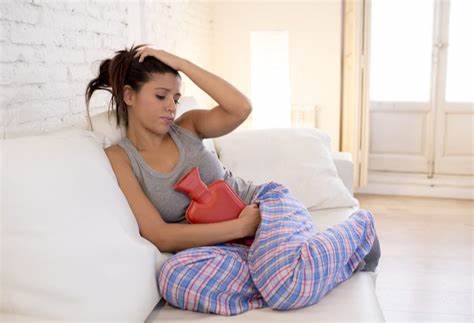Study of Body Mass Index and its Association with Menstrual Irregularities among Adolescent Girls

Abstract:
Menstrual irregularities such as irregular cycles including length of cycle, heavy or scanty menstruation blood loss are more common among adolescents during the initial year of menarche. When menstrual irregularities affect their day-to-day activities and quality of life it is to be addressed. A survey was taken with a questionnaire from 250 willing adolescent girls from 12-17 years of age. Data was collected regarding age, height, weight, age of menarche, duration of menstrual cycle, menstrual flow, pain, History of Anaemia, PCOS, Thyroid disorders, and necessary family history. Data collected were analysed through tables using proportions and percentages. In our study mean BMI is 22+4.8. Girls with high BMI had more hypomenorrhoea oligomenorrhoea and cycle irregularities when compared to normal and low BMI girls while menorrhagia is seen more among underweight girls and the mean age of menarche is 13+1.4. Menstrual health, menstrual hygiene awareness and early detection and treatment of any irregularities along with lifestyle modification play a key role in well well-being of their community and that of their county for decades.References:
[1]. World Health Organisation. Geneva: World Health Organisation; 1996, Programming for Adolescent Health and Development, WHO Technical Report Series No. 886. https://www.who.int/publications/i/item/9241208864
[2]. Jain K, Garg SK, Singh JV, Bhatnagar M, Chopra H, Bajpai SK, 2009, Reproductive health of adolescent girls in an urban population of Meerut, Uttar Pradesh. Health and population: Perspectives and issues. 2009; 32:204–9. https://api.semanticscholar.org/CorpusID:73178282
[3]. Kulkarni M, Durge PM, 2011, Reproductive health morbidities among adolescent girls: Breaking the silence. Ethno Med. 2011; 5:165-8.
[4]. [4] Teri Pearlstein, Meir Steiner, 2008, Premenstrual dysphoric disorder: Burden of illness and treatment update. Journal of Psychiatry Neuroscience. 2008 July;33(4):291-301. https://www.ncbi.nlm.nih.gov/pmc/articles/PMC2440788/
[5]. Anitha Nath, Suneela Garg, 2008, Adolescent friendly health services in India: A need of the hour. Indian J Med Sci; 2008 Nov; 62(11):465-72. https://pubmed.ncbi.nlm.nih.gov/19265240/
[6]. Narayan K A, Srinivasa D K, Pelto P J, Veerammal S, 2001, Puberty rituals, reproductive knowledge, and health of adolescent school girls in South India. Asia-Pacific Population Journal, Volume 16, Issue 2, Mar 2001, p. 225-238. https://www.un-ilibrary.org/content/journals/15644278/16/2/27
[7]. Mary Ann Campbell, Patrick J. McGrath, 1997, Use of medication by the adolescents for the management of menstrual discomfort. Arch Pediatr Adolesc Med; 1997; 151(9):905-913. https://pubmed.ncbi.nlm.nih.gov/9308868/
[8]. Rajsinh V. Mohite, Vaishali R. Mohite, 2013, Correlates of the menstrual problems among rural college students of Satara district. Al Ameen J Med Sci 2013; 6(3):213-218. http://ajms.alameenmedical.org/ArticlePDFs/6%20AJMS%20V6.N3.2013%20p%20213-218.pdf
[9]. Lambert-Messerlian G, Roberts M B, Urlacher S S, Ah-Ching J, Viali S, Urbanek M, McGarvey S T, 2011, First assessment of menstrual cycle function and reproductive endocrine status in Samoan women. Hum Reprod, 2011 Sep; 26(9):2518-24. https://pubmed.ncbi.nlm.nih.gov/21677061/
[10]. Lourdes Ibáñez, Abel López-Bermejo, Marta Díaz, Maria Victoria Marcos, Francis de Zegher, 2011, Early metformin therapy (age 8-12 years) in girls with precocious pubarche to reduce hirsutism, androgen excess, and oligomenorrhea in adolescence. J Clin Endocrinol Metab 2011 Aug;96(8): E1262-7. https://pubmed.ncbi.nlm.nih.gov/21632811/
[11]. WORLD HEALTH ORGANISATION, Geneva 1995, Report of a WHO Expert Committee on Physical status: The use and interpretation of anthropometry. WHO technical report series 1995:854(9):1-452. https://iris.who.int/handle/10665/37003
[12]. WHO Expert Consultation, 2004, Appropriate body-mass index for Asian populations and its implications for policy and intervention strategies. The Lancet 2004 Jan; Volume 363: Issue 9403, 157-163. https://www.thelancet.com/journals/lancet/article/PIIS0140-6736(03)15268-3/abstract
[13]. Zxyyann Jane Lu, 2001, The relationship between menstrual attitudes and menstrual symptoms among Taiwanese women. Journal of Advanced Nursing 2001; 33:621-628. https://pubmed.ncbi.nlm.nih.gov/11298198/
[14]. Kural M, Noor NN, Pandit D, Joshi T, Patil A, 2015, Menstrual characteristics and prevalence of dysmenorrhea in college going girls. J Fam Med Prim Care; 2015 Jul-Sep 4(3):426-31. https://www.ncbi.nlm.nih.gov/pmc/articles/PMC4535108/
[15]. Manjula S. Patil, Angadi M M, 2013, Menstrual pattern among adolescent girls in a rural area of Bijapur. Al Ameen J Med Sci 2013; 6(1):17-20. http://ajms.alameenmedical.org/ArticlePDFs%5CAJMS%20V6.N1.2013%20p%2017-20.pdf
[16]. Prasad BG, Sharma P, 1972, A study on menstruation of medical college girls at Lucknow. Journal of Obstetrics and Gynaecology of India 1972; 22:690-4. https://jogi.co.in/storage/articles/files/filebase/Archives/1972/dec/1972_690_694_Dec.pdf
[17]. Omidvar S, Amiri FN, Bakhtiari A, Begum K, 2018, A study on menstruation of Indian adolescent girls in an urban area of South India. J Family Med Prim Care 2018 Jul-Aug; 7(4) :698-702. https://www.ncbi.nlm.nih.gov/pmc/articles/PMC6132001/
[18]. Chauhan P, Shaik RA, Anusha DVB, Sotala M, 2019, A study to assess knowledge, attitude, and practices related to menstrual cycle and management of menstrual hygiene among school-going adolescent girls in a rural area of South India. Int J Med Sci Public Health 2019; 8(2):114-9. https://www.bibliomed.org/?mno=15452
[19]. Rupa Vani K, Veena KS, Subitha L, Hemanth Kumar VR, Bupathy A, 2013, Menstrual Abnormalities in School Going Girls – Are They Related to Dietary and Exercise Pattern? Journal of clinical and diagnostic research 2013 Nov; 7(11): 2537-2540. https://www.ncbi.nlm.nih.gov/pmc/articles/PMC3879880/
[20]. Karout N, Hawai SM, Altuwaijri S, 2012, Prevalence and pattern of menstrual disorders among Lebanese nursing students. East Mediterr Health J 2012 Apr; 18(4):346-52. https://pubmed.ncbi.nlm.nih.gov/22768696/

